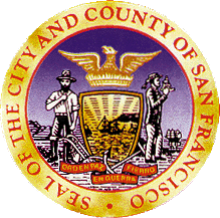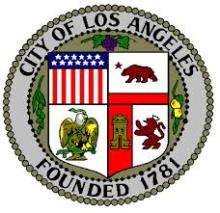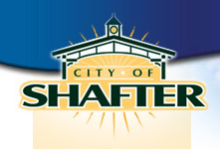Fast, affordable Internet access for all.
california
Content tagged with "california"
White Space Pilot Project Brings Basic Internet From Library to Residents … For Free!
The Gigabit Libraries Network (GLN) has orchestrated a pilot project to optimize white space technology for connectivity in and near community libraries and schools. We discussed this approach on our most recent podcast with Don Means, coordinator of the project.
White spaces wireless, sometimes referred to as "Super Wi-Fi" or "TVWS," can provide limited access in rural areas with limited funds and limited connectivity options. The technology is still in the development stage but creative people working in community libraries are finding new ways to use it.
GLN's goal is to bring next generation connectivity to all 16,000 libraries in the U.S. The organization grew out the 2007 "Fiber to the Library" Campaign from the Community TeleStructure Initiative. The initiative is a collaboration of institutions of higher education, corporations serving the higher education technology market, and related entities. GLN advances the idea that anchor networks, like those at the library, are cost effective ways to serve populations and to create middle mile access.
"White spaces" are the unlicensed low-frequency spectrum that was reserved for television signals prior to digitization of television. (If you are REALLY old, like me, you remember the "UHF" and "VHF" dials on the ol' black-and-white.) As we transitioned to digital TV, the spectrum was abandoned. White spaces differ from traditional point-to-point wireless spectrum because they do not require a line of sight. Buildings, trees, or other obstacles do not stop the signals. Thurman, New York, and New Hanover County in North Carolina use white space technology for limited Internet access in their areas.
Don Means on Libraries and White Spaces - Community Broadband Bits Episode 79

San Francisco's Market Street Now Offering Free Wi-Fi
San Francisco now offers free Wi-Fi along Market Street. The city of approximately 825,000 joins a growing number of local municipalities that provide the service in select parts of town or in the entire city limits. The San Francisco Chronicle reports private companies donated hardware and a gigabit of bandwidth. The final cost was $500,000 to deploy the service, which extends approximately three miles.
According to Govenment Technology, the City Department of Technology developed the system and installed the equipment on traffic lights and other city-owned property. After several attempts to partner with private sector providers failed, city leaders decided it was time to act on their own:
"It was simpler, faster, better to do it on our own," said San Francisco CIO Marc Touitou in a release. "The quality is higher, with the technical design by the Department of Technology. We wanted high capacity. ... We wanted it to be cool -- no strings attached, no ads."
On December 10th, Mayor Bloomberg announced that the City of New York would soon provide free Wi-Fi in Harlem. We have also reported on many of the other communities that offer free municipal Wi-Fi including: Ponca City, Oklahoma; Aztec, New Mexico; and San Jose, California.
San Francisco Mayor Edwin M. Lee noted the free service is only the beginning of larger plans to improve connectivity. From the city news release:
Solar Powered Wireless on the Reservation - Community Broadband Bits Episode #76

Los Angeles Wants Better Networks
The City of Los Angeles has announced a confusing intention to release an RFP for a vendor to install a gigabit fiber network. A recent Government Technology article touches on the broad plan to build a massive fiber and wireless network to every public and private premise.
GovTech spoke with Steve Reneker, general manager of the Los Angeles Information Technology Agency. We last spoke with Reneker in Episode #11 of the Community Broadband Bits podcast. In that interview, he described how Riverside, California, used the publicly owned network to revitalize the economy and support the community's digital inclusion plan. Los Angeles wants to emmulate Riverside's success. From the GovTech article:
“[The plan] is really focused on fixing the operational issues that due to the economy have been left by the wayside over the last three and four years,” Reneker said. “So, correcting the lack of investment, the lack of technology refresh, the reduction in staff that make operational aspects of our infrastructure difficult to keep going forward, tries to deliver an incremental approach to starting a long, lengthy rebuilding process.”
Councilman Bob Blumenthal introduced a proposal in August, 2013 to also blanket the city in free Wi-fi. Blumenfield's website states the city has 3,500 existing wireless hotspots.
Engadget reports that the City Council unanimously approved the proposal to move forward with the plan at a November 5th meeting. A Request for Proposals will be issued in the coming months for the fiber and free wireless network:
Central Coast Californians Choose Cost Savings Over Charter
California's Watsonville, population 51,200, joins the ranks of municipalities considering the benefits of a publicly owned fiber optic network to connect key facilities. At a September 10 the City Council passed a resolution approving plans and calling for an RFP for a next generation fiber network. Bids will be accepted until October 8, 2013.
According to a Register Pajaronian article, the City Council expects the network to cost $480,000. An August 27 memorandum [PDF] provides more detail on the project.
Charter Communications currently provides fiber optic I-Net service to Watsonville local government. The network provides data connections, Internet, gate controls, and security systems throughout the City. The fiber I-Net also provides backhaul for wireless systems for the police department and various remote city locations.
As has happened many in states that have revoked local franchise authority, Watsonville's favorable long term cable franchise agreement with Charter is ending. Charter will no longer provide the I-Net services for no cost as part of its agreement to place its equipment in the public rights-of-way. Instead, it has proposed expensive lease options.
Charter has offered two quotes: $43,115 per year for a reduced level of service and $149,153 per year for the same level of service the city now receives. The memorandum goes on to note that a reduced level of service would require reduction of some uses for the current network, such as eliminating a number of security cameras.
City staff estimates that installation of a next generation network would cost approximately $480,000. They would connect the high school, the City Information Technology office, the Veterans Building, the local reservoir, the library, the airport and the fire station. Watsonville has a significant amount of fiber already in place for use in the citywide transportation system which will reduce the cost of installation. The project will be financed primarily with library and water enterprise funds and other city departments that connect will contribute to the project costs.
California's Smallest Incorporated City to Extend Fiber to Residents
Residents of Vernon, California, will soon have the option to connect to the City's fiber optic network. Vernon offers dark and lit fiber to local businesses via 35 miles of fiber but residents are stuck with slow DSL connections. An EGPNews.com article reports:
City officials say they hope to bridge the digital gap for its residents by becoming an Internet Service Provider, creating, and operating a small-scale broadband residential service program. The Internet will be provided to residents through direct fiber optic connections or via a wireless service connection.
The program will be available to all existing and future residences in the city.
Vernon Light & Power Department Fiber Optic Division serves this town's 5.2 square miles located south of downtown Los Angeles. The population is only 112 in 31 existing households. The network will also connect a future residential project, Meta Housing, scheduled to be completed by the end of 2013. The City is the smallest incorporated city in the state, describing itself as "exclusively industrial." Vernon is home to over 1,800 businesses that employ 50,000 people from surrounding communities.
The new initiative will connect residents for a one-time connection fee of $100. Monthly service will cost $40.65, which is $10 less than DSL. The fiber connections will be 10 times faster than current DSL speeds. Residents should be able to access the network by November 1.
Shafter Network Expands To Serve Local Businesses in California
The community of Shafter enjoys savings, better public safety, and more educational opportunities with the municipal fiber network that we wrote about two weeks ago and discussed in last week's podcast. In 2006, Shafter spent $200,000 on its I-Net to serve local schools and government in the core of the downtown area. While the community had originally planned to build a FTTH network, the tumultuous economy dictated otherwise and the community adjusted its course.
The community is now expanding infrastructure to several areas closer to the edge of town in order to serve local business. With next-generation fiber infrastructure in place, Shafter expects to attract several providers interested in serving businesses over its open access network. Completion is scheduled for the fall of 2013.
A 25 mile fiber backbone ring is now under construction and will loop to two industrial areas near the edge of town. Both complexes sit very close to the two main railroad lines that run through the town and provide easy access to transport. In addition to the larger loop, one of the industrial areas, will contain a 10 gigabit ring and the city will light two separate commercial rings to provide 1 gigabit service. This phase of Shafter's project will cost $1.5 million and required equipment will cost another $600,000. The network is underground, with 99% in city road rights-of-way. The entire path travels through greenfield areas so there is almost no infrastructure to avoid or remediate. General fund dollars, rather than bonding, borrowing, or grants paid for the entire open access network.
We learned from IT Director Scott Hurlbert that oilfield services company, Baker Hughes, invested $70 million to build a campus in Shafter. AT&T serves the company now with copper lines but "they don't like it," says Hurlbert. A 2.1 million square feet Target distribution center sits nearby waiting to switch to the Shafter fiber network.
Shafter Fiber Network, Then, Now, and Next - Community Broadband Bits Episode #56







